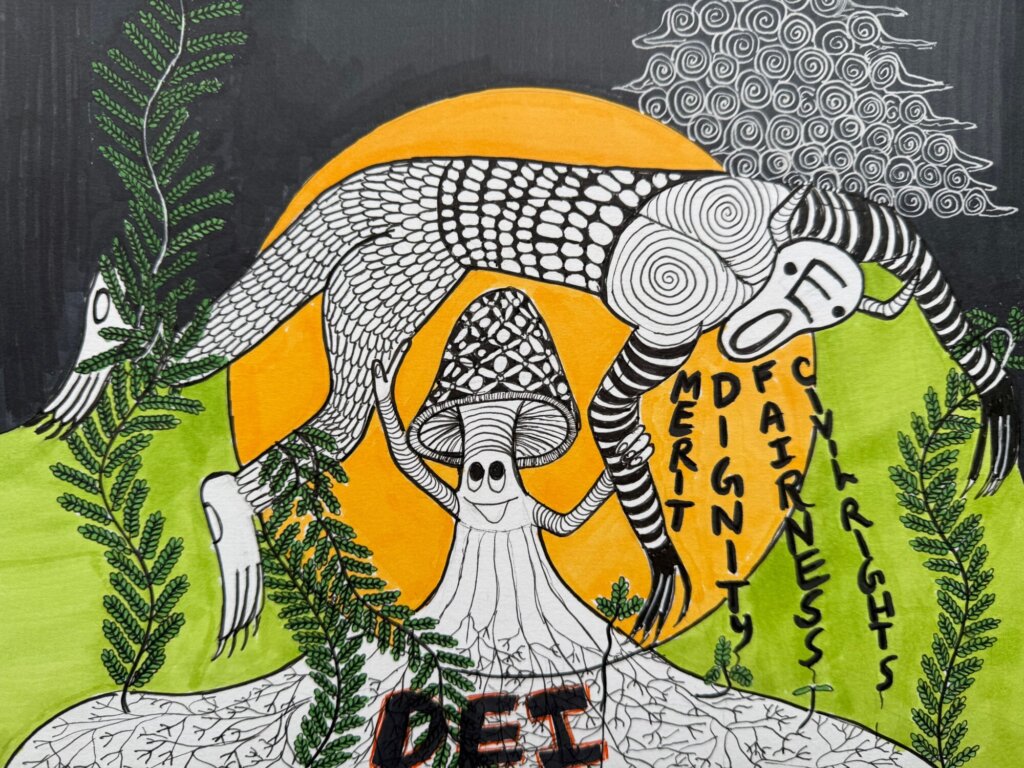Aparna
Published on
04 - 28 - 2025
Aparna
Published on
04 - 28 - 2025

Dear Avarna community,
We’re only four months into four years of this presidential administration, and the attacks on everything our community values—equity, justice, the environment—feel relentless.
So what can I offer you that doesn’t just become more noise? More punditry purporting to predict a future that we cannot see? I won’t tell you “it’ll all be okay.” I won’t tell you to “fake it till you make it.” But I can tell you what I do know—through my intersecting lenses of law, equity, and environment—and try to cut through the noise.
Let’s start here: Executive Orders are not the law of the land. They don’t have magical powers. They don’t “maintain acceptable pressures in showerheads” (yes, there was an EO about that). They absolutely do not make DEI illegal. Last week’s EO doesn’t override the Civil Rights Act or eliminate the disparate impact standard. And no EO—now or in the future—can make climate or environmental work illegal.
Because here’s the thing: just because a President declares something “illegal” doesn’t make it illegal. Real law still requires Congress or the courts.
Organizations with legal resources—law firms, nonprofit associations, and companies—are already fighting back, filing lawsuits challenging these EOs on constitutional grounds. And in calls that I have attended, lawyers involved in these challenges report that “the administration is losing in almost all cases.”
One case I’ve been following closely is the National Association of Diversity Officers in Higher Education’s challenge to the EOs on “Illegal DEI” and “Radical and Wasteful Government DEI,” which aimed to:
The lower court initially blocked these provisions through a preliminary injunction, but the 4th Circuit Court of Appeals lifted the block—not to validate the EOs, but to acknowledge that they didn’t cause immediate and irreparable legal harm on their own because they didn’t illegalize DEI.
In fact, Chief Judge Diaz wrote: “People of good faith who work to promote diversity, equity, and inclusion deserve praise, not opprobrium… [W]hen policies are truly inclusive, it creates an environment and culture where everyone is respected and valued. What could be more American than that?”
And Judge Harris emphasized that the EOs only make illegal what is already illegal under federal anti-discrimination law—and that her decision should not be seen as agreement with the anti-DEI rhetoric. She even suggested that if the government ever tried to enforce these orders in ways that dismantle lawful DEI efforts, the court would likely respond differently.
Translation: The EOs don’t change the law—and most of DEI remains squarely within the law.
Now to the EEOC—the Equal Employment Opportunity Commission. For a long time, it was just that agency behind the breakroom posters about your workplace rights. But lately, the EEOC has become a public tool of the anti-DEI movement.
Before this administration even began, groups like Trump advisor Stephen Miller’s America First Legal were already filing EEOC complaints against “woke corporations” claiming they engaged in “reverse discrimination.” More recently, the EEOC sent threatening letters to 20 law firms involved in DEI work. And last month, it issued a document titled “What You Should Know About DEI-Related Discrimination at Work.”
The title sounds ominous, but the document is riddled with vague and qualifying language—“may,” “can,” “depending on the facts”—signaling that what we’re looking at is politics dressed up as policy.
The EEOC claims certain trainings “may” create a hostile work environment if they stereotype based on protected characteristics. But as 10 former EEOC officials pointed out in a public letter responding to the purported guidance, that legal threshold is high—and only met in extreme situations. Examples that passed this threshold include:
A federal court in Washington recently rejected a claim that Seattle’s racial equity trainings created such an environment. Judge Whitehead’s opinion reaffirmed what we have often told participants in our trainings: discomfort is not the same as exclusion.
“While conversations about racial equity may prompt discomfort… they do not necessarily violate anti-discrimination laws. … These training programs are needed because racial discrimination and inequality are present-day problems [and] [p]assive exposure to these concepts… cannot reasonably be construed as a threat to [the employee’s] safety or well-being.”
So yes, training can and should continue. But let’s make it matter:
The EEOC document also targets ERGs, raising concerns about exclusion. Here’s what you need to know:
Still, in this climate, some adaptations make sense. Borrowing from guidance shared by the Meltzer Center, here’s how to keep ERGs thriving:
***************
I’ll wrap with something that may sound like it belongs on a cheesy inspirational sailing poster (full disclosure: I do not sail, and I get seasick just watching “Below Deck”). And also full disclosure, ChatGPT helped me really flesh out this metaphor to its full cheesy potential.
It’s easier to stay committed to values like equity, justice, and belonging when the seas are calm and the wind is at our backs. But the true test of those values comes in a storm—when the gusts get wild, the compass starts spinning, and someone’s yelling “man overboard” metaphorically and literally.
So here’s my plea: have courage in the chop. I get that we all have different levels of risk tolerance—but short of abandoning equity altogether, there will always be risk.
And here’s the kicker: if you furl your sails and steer toward safer waters, you might avoid today’s headwinds, but you open yourself up to an entirely different squall—the one that led us to create Civil Rights laws and DEI work in the first place. The risks of exclusionary workplaces. Of lawsuits by people with marginalized identities who are tired of being othered. Of diluted values that leave your mission hollow when the storm passes.
And when those political winds do change—and they will—where will you be? What will your community say? What side of history will you be anchored to?
Choose boldly. Steer true. And keep that equity compass pointed north—even if your sea legs are a little shaky. And if you’re tempted to change course when the next EO comes our way, remember that low-pressure showerheads are still around, despite our President’s ire.
With you always,
aparna
Avarna Community, It is with nearly all the emotions you might find in an emotions wheel that I am announcing…
Read full post about Farewell, AvarnaThe current administration’s anti-DEI Executive Orders have sparked varied responses in the nonprofit and private sectors—some organizations are defending DEI…
Read full post about DEI Jujitsu: Flipping the Backlash to Reframe Our WorkPhoto Description: Underground tunnel Dear Avarna community, The political attack on DEI has escalated in the past two weeks, with…
Read full post about 2 Weeks In: Reflections, Recommendations, & Resources on DEI

